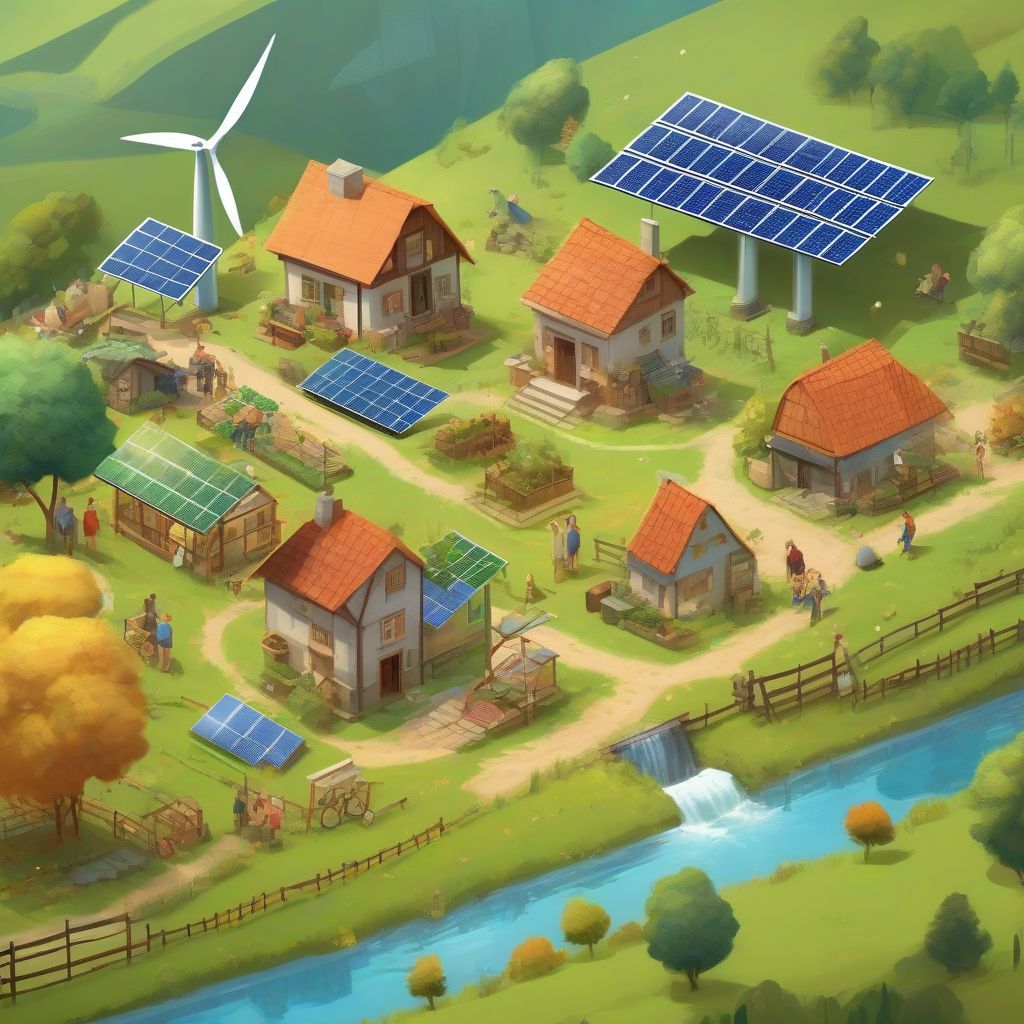Imagine a world where remote villages, nestled amidst rolling hills or sprawling deserts, are no longer energy-deprived. A world where sustainable power hums quietly, fueling homes, schools, and businesses, fostering growth and opportunity. This isn’t a futuristic dream, but a tangible reality within our reach, thanks to the remarkable advancements in renewable energy solutions. This article explores the best renewable energy options for rural areas, empowering you with the knowledge to choose the perfect solution for your unique needs.
Understanding the Unique Needs of Rural Areas
Rural communities often face distinct energy challenges, including limited grid access, dispersed populations, and reliance on expensive, polluting diesel generators. Renewable energy offers a powerful antidote, delivering clean, reliable power while reducing reliance on fossil fuels and boosting local economies. “Renewable energy isn’t just about saving the planet; it’s about empowering communities,” says Dr. Emily Carter, a leading renewable energy expert. Her book, “Powering the Future: Sustainable Energy for All,” highlights the transformative impact of renewable energy in rural areas.
Top Renewable Energy Solutions for Rural Communities
Solar Power: Harnessing the Sun’s Energy
Solar power, a cornerstone of rural electrification, converts sunlight directly into electricity using photovoltaic (PV) panels. Ideal for sunny locations, solar offers several advantages, including low maintenance, modular scalability, and decreasing costs. Off-grid solar systems, coupled with battery storage, provide a dependable power source for homes and businesses, while larger, grid-connected systems can power entire villages.
Wind Energy: Capturing the Power of the Breeze
Wind energy, another potent renewable resource, harnesses the kinetic energy of the wind using turbines. Suited for areas with consistent winds, wind turbines can generate significant amounts of electricity, particularly in open plains, coastal regions, and mountainous terrain. “Wind energy is a powerful force for change in rural areas,” notes John Miller, a wind energy consultant.
Hydropower: Tapping into Water Resources
Hydropower, a long-established renewable energy source, leverages the energy of moving water to generate electricity. While large-scale hydropower projects require significant infrastructure, small-scale hydro systems, like micro-hydro, are well-suited for rural areas with rivers or streams. These systems provide a consistent, reliable power source, particularly in mountainous regions.
Biomass Energy: Utilizing Organic Matter
Biomass energy, derived from organic matter like wood, agricultural residues, and animal waste, offers a versatile solution for rural communities. Biomass can be used to generate electricity, heat, and biofuels, providing a valuable resource for cooking, heating, and powering local industries.
Hybrid Systems: Combining the Best of Both Worlds
Hybrid systems, combining two or more renewable energy sources, offer a robust and adaptable solution for rural electrification. For instance, a solar-wind hybrid system can provide reliable power even when sunlight is limited or wind speeds are low. Similarly, a biomass-solar hybrid system can provide a consistent energy supply year-round.
Key Considerations for Choosing the Right Solution
Selecting the optimal renewable energy solution requires careful consideration of several factors, including:
- Resource Availability: Assess the availability of solar, wind, hydro, or biomass resources in your specific location.
- Energy Demand: Evaluate the energy needs of the community, considering current and future consumption patterns.
- Cost and Financing: Analyze the upfront investment, operational costs, and available financing options for each technology.
- Environmental Impact: Consider the potential environmental impacts of each solution, including land use, water usage, and emissions.
- Community Engagement: Involve the local community in the decision-making process to ensure buy-in and long-term sustainability.
Empowering Rural Communities through Renewable Energy
Renewable energy solutions offer a transformative opportunity for rural communities, providing access to clean, reliable power, stimulating economic growth, and improving quality of life. By carefully evaluating the available options and engaging with local stakeholders, rural communities can harness the power of renewable energy to build a brighter, more sustainable future.
 Renewable-Energy-in-Rural-Areas
Renewable-Energy-in-Rural-Areas
Conclusion
The journey towards sustainable rural electrification requires a comprehensive approach, encompassing resource assessment, technology selection, community engagement, and policy support. By embracing renewable energy solutions, rural communities can unlock their full potential, paving the way for a more equitable and prosperous future. We encourage you to share your thoughts and experiences with renewable energy in the comments below. Let’s work together to empower rural communities worldwide.



